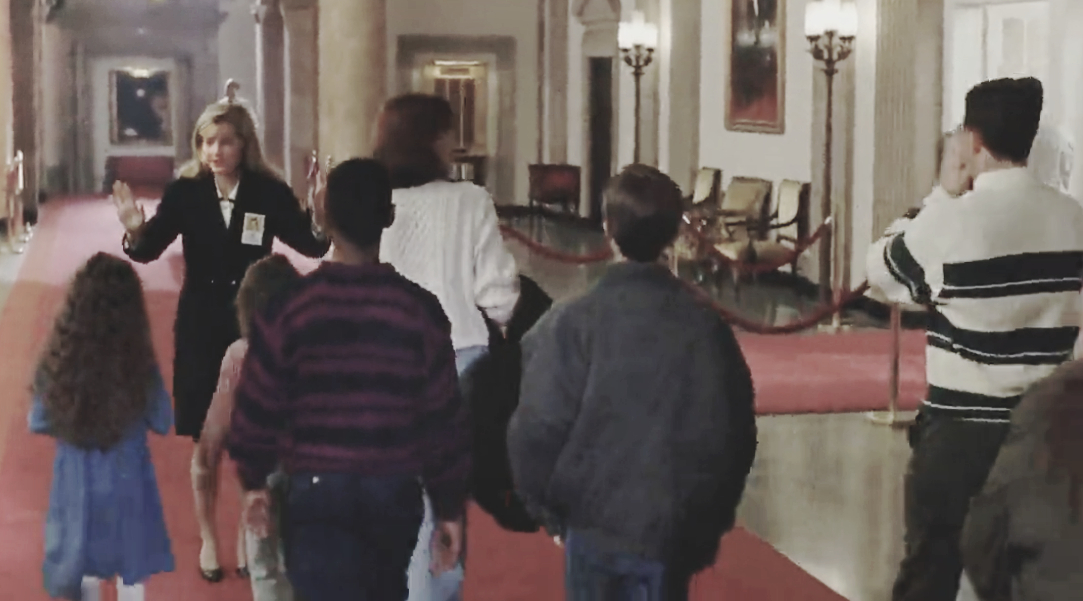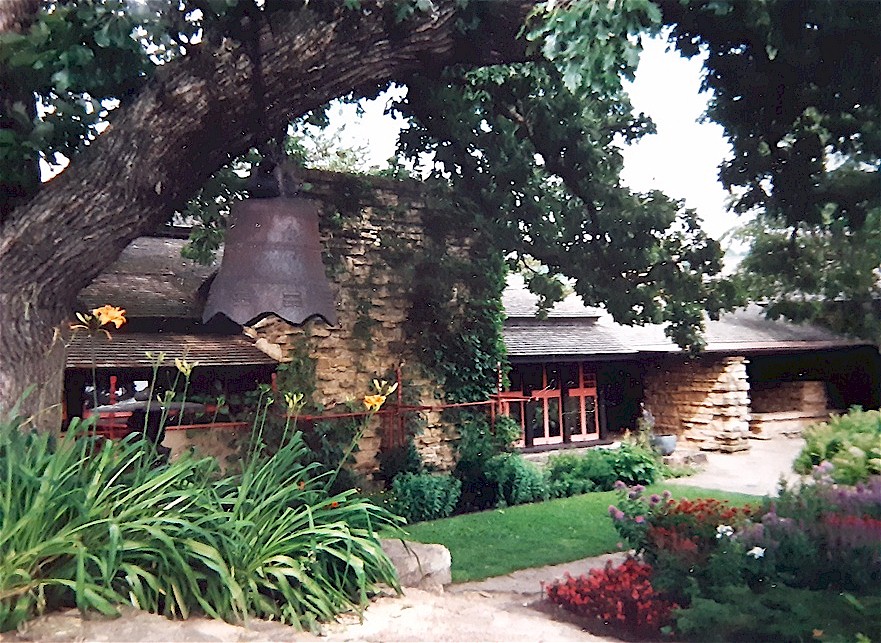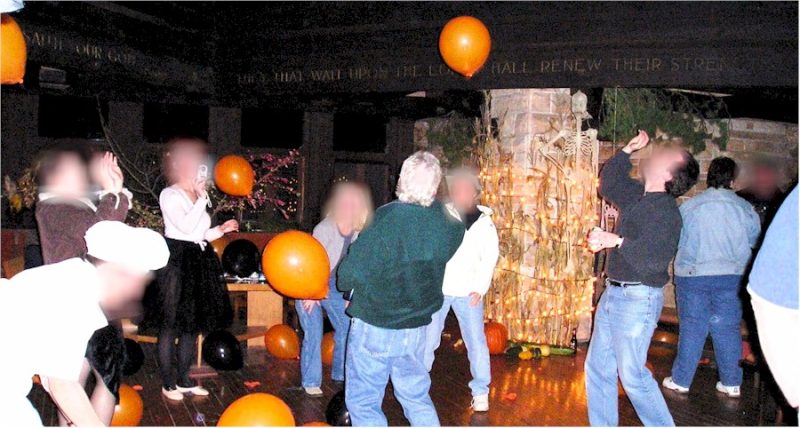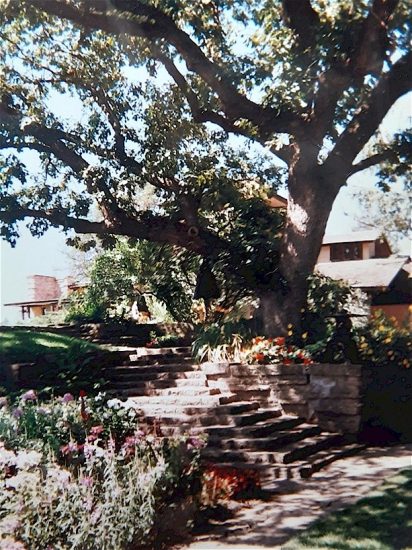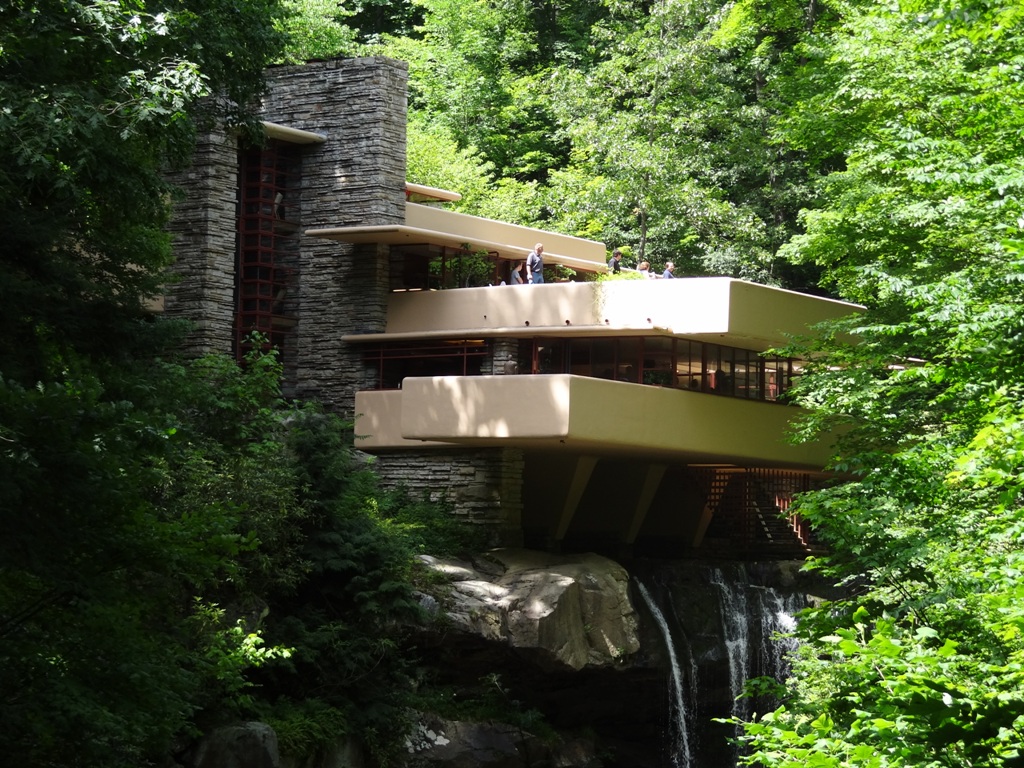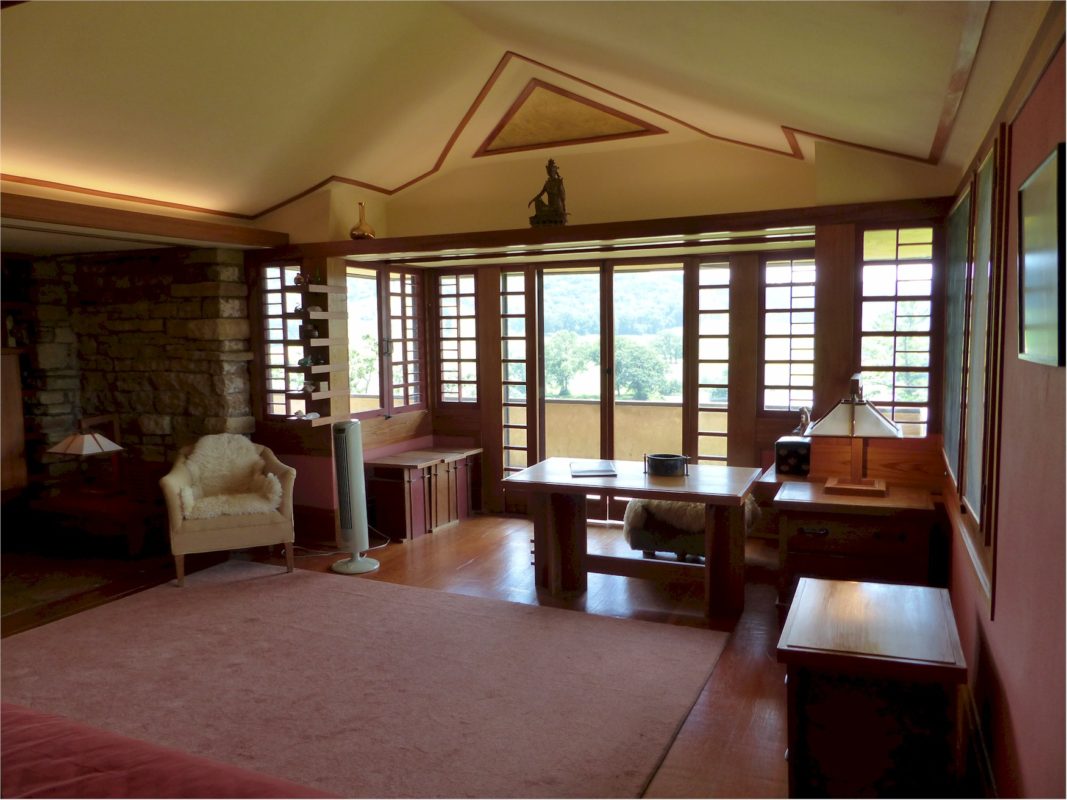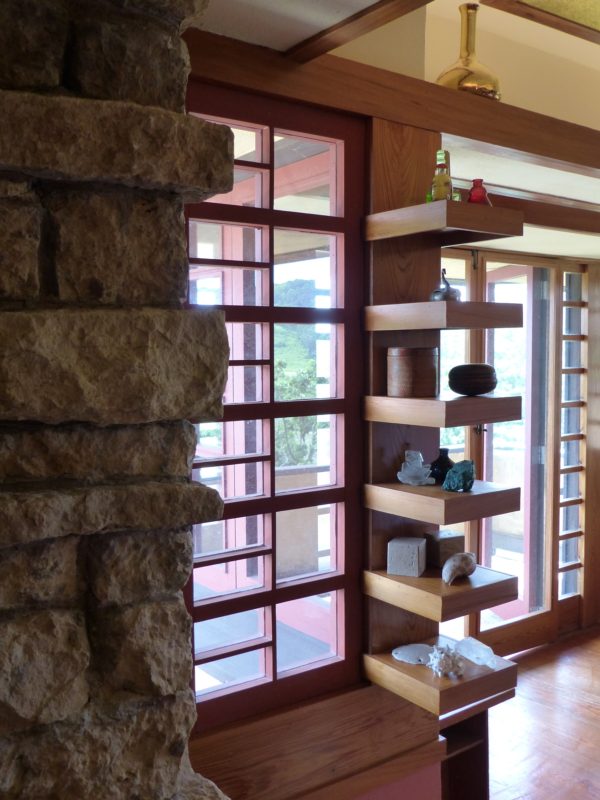A photo I took of staff from Taliesin Preservation on a “class trip” to the Johnson Wax World Headquarters.
The “telephone game of tour guiding” is what I came up with after hearing some whoppers from tour guides at Taliesin.
btw: I’m writing only about staff I’ve come across, not who’s giving tours there now.
I gave an example of one telephone game at the bottom of my post, “Well, the guide told me“
which, well yes: involves a guide recently giving tours. Go and read the article; you’ll see it’s necessary.
Although I’ve got to say
The guides at Taliesin were pretty damned good. But they’re human. After all, for years I told the
FALSE
story that murderer Julian Carlton killed people while they all fled out of the same door during the fire/melee in 1914.
Read my post “Julian didn’t seal the entrances” to find out why I say that now.
But when a person’s learning a tour, they hear things from the instructors, other guides, then people on their earliest tours who may know more than they do.
Things filter in, and get repeated, and guides remember incorrectly, then tell something on a tour, which is heard by another guide, who says it on their tour (and maybe changes a word or two), ad infinitum. . .
I tried to correct things through my weekly “Hey Keiran!” articles
But I couldn’t be sure.
Like, here was one that drove me nuts:
One of the guides kept tying something that Wright wrote to the 1914 fire, when he was plainly talking about Taliesin’s 1925 fire.
In fact, here’s what the guy wrote about that fire’s aftermath:
The living half of Taliesin—gone—again.
Plate glass windows lay, crystal pools in ashes in hot stone pavements.
Smoldering or crumbled in ashes, priceless blossoms-of-the-soul—we call them works of Art—lay broken, or had vanished utterly….
Frank Lloyd Wright. An Autobiography (Longmans, Green and Company, London, New York, Toronto, 1932), 259.
However, she kept saying that the “soul” of “Blossoms of the soul” were the victims from 1914.
And not art. As in “we call them works of Art”. As in the actual words the man wrote.
So, I just kept bringing up Wright’s “blossoms of the soul” quote in my

articles, hoping she would read them and change her story.
I kept hoping that maybe she’d give in when she did too many tours at the end of the season.
Sometimes you change things when you get loopy like that.
But, no. It was like the problems I had convincing one guide that Wright actually had the blue shag carpet in his bedroom. That tour guide, John, refused to believe me even when I showed him color photos. He was convinced it was the work of Wright’s wife, Olgivanna.
Still, we did try to control what people said on tours through training. When I was there, guides started giving their tours after 4-full days of training, then everything from announcing the tour, how to get folks on the shuttle, how to talk while the bus is taking you there—and remember that YOUR right is THEIR left—give a full tour to you and staff, until their first public tour.
But as for other tours,
guides trained by taking tours from other guides. And they found out other things by reading my weekly Hey Keirans, or by talking to other guides.
So, sometimes unusual things got stuck in the mix.
Like,
one time a man called me (as the historian) on the phone. He was giving a speech the next day, and was checking to see if the story he’d heard from his Taliesin tour guide was true so he could use it.
The story?
That as Solomon Guggenheim was driving to Taliesin, Wright took that conch shell on a table in Taliesin’s Garden Room and was inspired to design the Guggenheim Museum.
The shell’s on the far left in my photo below:

In my Hey Keiran column the next week, I repeated what the man had asked me about and said that this was a conflation of another commission that Wright received: that little building that we know as FALLINGWATER.1
You know? One of the most famous things about Wright aside from the fact that he killed his second wife?2
I think my annoyance was really well displayed because, like, 2 years later a guide apologized to me for getting that wrong.
I never did
figure out how, exactly, this got into the ether.
I wonder what current guides find of interest today.
Although, there’s a few other things that came into Taliesin that I went into detail in my post, “Well, the guide told me”.
And hopefully,
nothing will be as bad as that one guide I took a tour with at another Wrightsite.
She
let me check my list…
- Told us that Wright patented the color, “Cherokee Red”
- Invented the trundle bed.
- Had architect Philip Johnson as an apprentice.
- That his second wife paid for the reconstruction of Taliesin after its 1925 fire.
- That a cat, described by someone on the tour as black and white, was a bobcat. I discovered later that bobcats are tan or brown.
So the cat they saw was probably a cat owned by someone in the Taliesin Fellowship.
And other things –
THAT I COULD REMEMBER.
I’m sure I forgot some things because I took the tour at, well, Taliesin West, in July of 2007.
which I said here going to in the summer isn’t worth the price you save on plane tickets. Don’t get me wrong: the building’s great. But the heat in Arizona in July makes you want to run under the shade cast by Saguaro cacti.
although that guide might have also said that Wright invented the file cabinet.
I can say one thing, though—
that guide saying Wright patented the color Cherokee Red pretty much takes the cake.
First published January 18, 2025.
I took the photo at the top of this post in 2016.
Note:
1. The “Fallingwater story” was first told by Edgar Tafel in his book, Apprentice to Genius. I wrote about the book here.
2. NO: he didn’t kill Mamah and they weren’t married. I know you know that, but I want to make sure I’m not in charge of another set of rumors.


